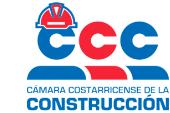News

Major trends in the construction industry
AMCO's operation is subject to constant assessments to make it more efficient. Over the years, improvements have been implemented to allow streamlining both internal processes and customer attention and service.
The construction industry is known to be one of the most time and resource-consuming industries. It is also known as an industry where waste is high. At AMCO, resources and efforts are allocated in order to adopt tools, systems, and processes that streamline projects for its customers, reducing both costs and time while increasing efficiency.
Worldwide, trends and methodologies have been implemented that this Costa Rican company has identified as necessary both for its operation and the market.
Currently, some countries such as the United States, Denmark, England, Japan, and Chile, among others, have implemented these systems and have managed to minimize waste by significant percentages. However, in a more incipient way, their adoption in Costa Rica has also aroused the interest of the leading companies in the industry.
Lean Construction
Lean production is a management model aimed at reducing waste and maximizing value for customers. Lean Construction is the term coined to refer to the application of this model in the construction industry, where its adoption is especially relevant due to its traditionally high levels of waste. Several tools are instrumental in the implementation of this model, such as work studies and the Last Planner System, which AMCO uses systematically in all its projects.
Work Study
The work study is a systematic examination of the production process, aiming to optimize the use of resources and define performance goals regarding the activities that are being carried out. It consists of measuring the resource working time (labor and equipment), separating the productive ones from those that are unproductive. This information will be used with the aim to propose changes in the production system that enable the reduction of downtime as much as possible and ensure that the maximum possible performance is obtained from the resources used. At AMCO, we have Production Inspectors who constantly carry out these studies in the projects developed by the company, so that a continuous improvement of the work can be generated.
Last Planner
The Last Planner is a planning and control tool that seeks to achieve a constant flow of work by reducing the uncertainty associated with construction activity planning. It considers the execution of work plans at multiple levels. First, a master plan defines the main milestones of the project. Then, an intermediate plan lists the activities necessary to meet those milestones in greater detail. This normally in a period of one to three months into the future.
Finally, a weekly work plan is attached to the intermediate programming that is prepared in conjunction with those who actually should carry out the work (construction foremen and crew chiefs). This last plan includes only the activities that have all the necessary requirements to ensure their execution. Throughout this exercise, the restrictions that prevent a continuous workflow can be detailed and their timely listing is planned.
Lean Construction aims to:
- Improve construction quality
- Maximize customer value.
- Improve security and risk management.
- Eliminate non-contributing jobs.
BIM methodology: Building Information Modeling is an information management methodology that allows collaborative work for creating and managing construction projects. Its objective is to centralize all the information related to a project in a digital information model created by the participants of the construction process. In this way, BIM considers all the elements of a project from the same system so that architects, clients, builders, and engineers, among others, work together during the project life cycle and can access it from different platforms both remotely and instantly. This system offers updated data of the entire project in real time, thus allowing making corrections before the production stage while saving time and money.
The BIM methodology allows:
- A smooth exchange of information.
- The information can be accessed from different platforms.
- Making a virtual replica of the project.
- Extracting measurements and budgets.
- Optimizing the future sustainable behavior of the project.
What does incorporating this type of system mean?
- Clearer goals are attained from the customer's perspective.
- The information can be consulted or corrected before the production stage.
- Anticipating possible conflicts.
- Optimizing activities in construction projects.
- Ensuring the reduction of product defects.
- Reducing costs.
- Improving the productivity of the workforce.
- Enhanced budget compliance.
- Generating value for customers.
- Other related benefits
“These trends have been developing for several years in other countries; however, they became relevant in our region until recently. This has implied an invitation for construction companies to adopt these continuous improvement tools to optimize each process”, explained Pablo Labarca, Director of Projects and Operations at AMCO. Additionally, he mentioned that AMCO adapts to the needs of its clients and seeks these optimizations to further improve the quality and support offered to each client.
At AMCO, the application of systems that maximize the performance of each project is considered key, with the aim of providing the excellent service that our customers expect.






